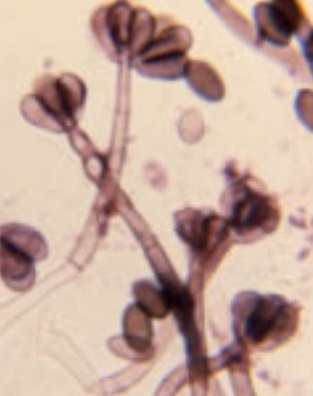Mold Library
Stachybotrys

Distribution
The genus Stachybotrys is a cosmopolitan fungus with a world-wide distribution. Stachybotrys species are most commonly isolated from soil and decaying plant material. Stachybotrys is highly cellulolytic. Indoors it is commonly isolated from water-damaged materials, including wallpaper backing and drywall elements.
Growth Characteristics
Stachybotrys species have a slow to moderately rapid growth rate. Colonies are generally black but may also appear white, pink, or orange in color. Stachybotrys colonies have a powdery texture.
Microscopic Characteristics
The conidiophores may be hyaline or pigmented with ellipsoidal phialides in groups of 3 to 10. Conidia are ellipsoidal, black, and smooth to roughened.
Health Effects
Stachybotrys can cause allergic and asthmatic reactions in sensitive individuals. No cases of human or animal infection have been reported. Stachybotrys species produce a number of mycotoxins that may be deleterious to human and animal health. These mycotoxins include the trichothecenes roridan E, satratoxins F, G, and H, and verrucarin J.
